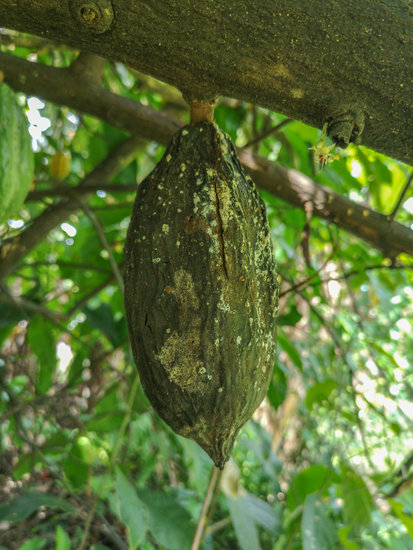The cacao tree and its fruits are not only affected by diseases but also pests and insects. These live predators can cause massive damage to the tree and as a result low-quality products as well as low yields. All the farmer wants is to produce high yields and sell quality cacao that will be profitable at the end of the day, right? Let’s look at some of these dream-killers in the cacao plantation.

COCOA MIRID /HELOPELTIS SPP
This slender red or brown insect with long legs and antennae causes wounds that look like punctures on young stems and pods. The affected areas rapidly turn black and this later leads to a discolored bark, dying leaves and branches, and unproductiveness of the cacao tree. The adult cacao mirid lays its eggs on the bark of the tree and it can lay up to 40 eggs. This insect “loves” direct sunlight and unshaded cacao trees act as hosts oftentimes. To manage the insect, providing shade to the growing trees is critical. Organic insecticides are also to manage the insect.
COCOA POD BORER
An adult female moth pod borer lays up to 200 eggs on the surface of a cacao pod. The larvae, cream in color, develop for 14-18 days before mutating. During this period, the larvae enter and exit the cacao pod leaving behind holes. This results in uneven and premature ripening of the fruit. The insects also eat the tissue around the seeds, and this causes the seeds to stick together. It gets very difficult to get the seeds out of the pods during harvesting. To manage the cacao pod borer, it is recommended to sleeve the pods once they start maturing to prevent the entry of any insects. Maintaining a good ecosystem is also a good solution as black ants and weaver ants help to manage the population of the pod borer. Pesticides can also be used.
COCOA MEALYBUGS
This is a funny type of insect as it excretes sugary honeydew secretions. It is a flat oval to round disc-shaped insect covered with a waxy substance. It attracts ants because of its sugary secretions. It causes the growth of mold on trees and swollen shoots. To manage this pest, careful use of organic pesticides is used as chemicals can also destroy the mealybug’s enemies such as lady Beetle. Lady Beetles can also be used to manage the pest.

